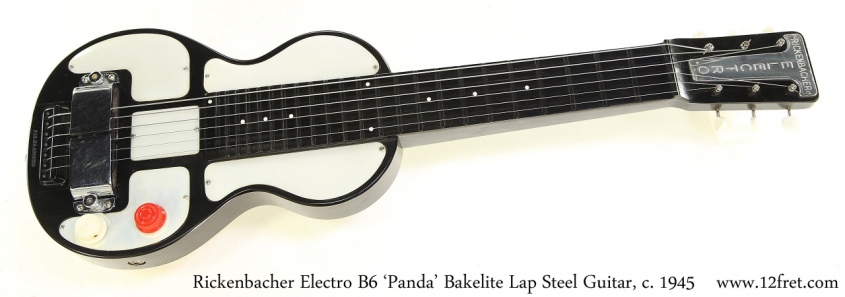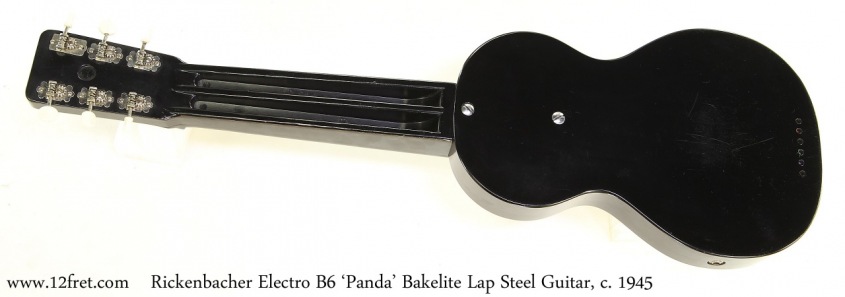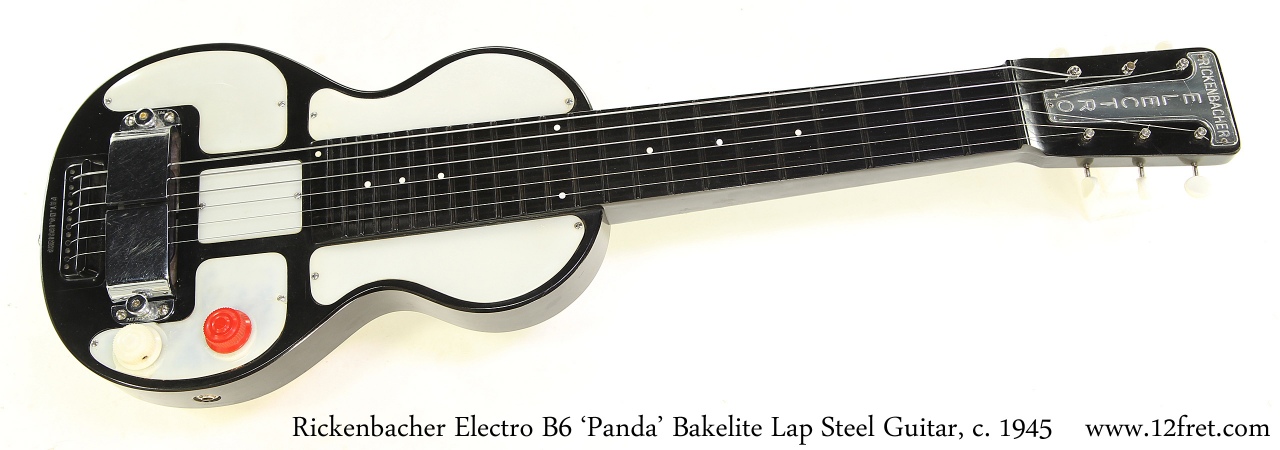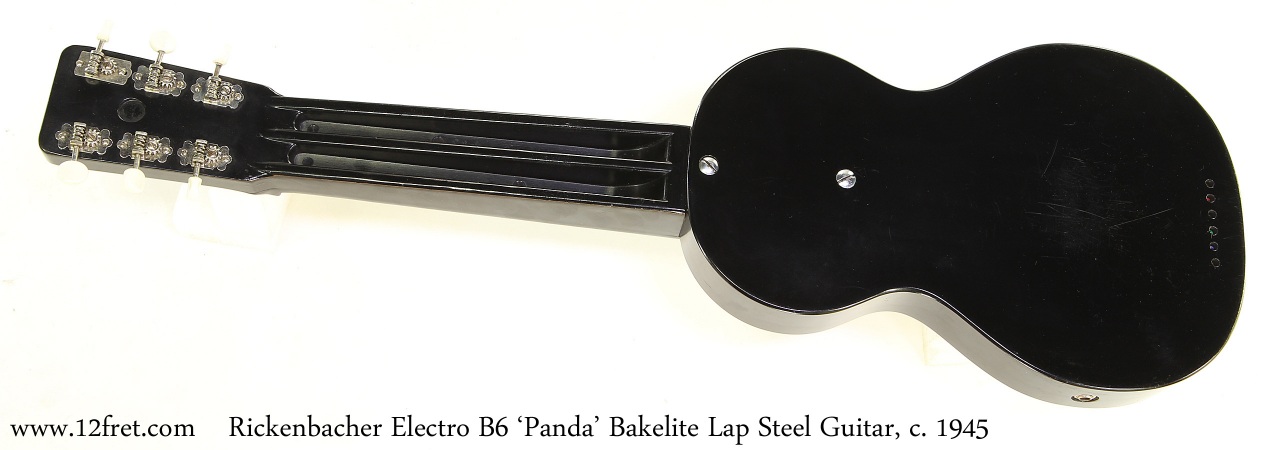Brand: Rickenbacker
Instrument Categories: Electric, Guitars, SOLD, Solidbody, Steel
The Rickenbacher Electro B6 ‘Panda’ Bakelite body and neck Lap Steel was built from 1935 to 1955 and demonstrated a number of changes over the years including a change in the company name to Rickenbacker.
The Rickenbacher musical instrument company was founded in Los Angeles during 1931 by Adolph Rickenbacher. It was sparked by his work from 1927 producing metal parts and bodies for John Dopyera and George Beauchamp’s new company, National String Instrument Corporation. Richenbacher holds a strong claim to having marketed the first successful solid body electric guitar during 1932, the ‘Frying Pan’ lap steel. This model was developed by George Beauchamp, Paul Barth, and Rickenbacher. For these instruments, they formed a new company named ‘RoPatIn’, which changed fairly quickly to ‘Electro String Instrument Company’. Rickenbacher also marketed one of the first production ‘Spanish’ style acoustic guitars, the 1935 “Ken Roberts” model.
Here we’re looking at a Rickenbacher Electro B6 ‘Panda’ bakelite lap steel, dating to around 1945. As this example seems to not have a serial number (normally stamped on the end of the headstock) dating is established via construction and features. There were three periods of production for these models, prewar, wartime, and postwar. However, there is some overlap in these periods as parts were used up.
The Prewar era has several immediately visible characteristics including a small headstock logo plate, an output jack facing the player, octagonal control knobs, five chromed brass cover plates and raised but not outlined frets.
The Wartime era outlined the frets with slots bracketing the fret, and these were originally filled with white paint. The output jack moved to face the audience, and the controls moved to that side as well. Towards the end of this period, the headstock logo plate was updated to a ‘T’ design with the company name written as ‘Richenbacher’ with ‘Electro’ in vertical letters. The frets had small channels next to each fret and these were filled with white paint to help identify the correct location for the steel. The chromed body plates were changed to white, enamelled steel or celluloid on the black Bakelite body, giving it the nickname ‘Panda’. During this period, the knob type changed to a ‘Flying Saucer’ design in varying colours – as seen here, the volume knob is red.
The Postwar era shows a number of significant changes. The spelling of the name ‘Richenbacher’ changed early 1946 to ‘Rickenbacker’, in an attempt to distance from German though Adolph Rickenbacher was actually Swiss. The bridge was changed from a string-through-body design to a metal add on, due to Bakelite breakage issues. Perhaps most importantly, the ‘Horseshoe’ pickup was reworked to a smaller size. The original pickups used a ‘Horseshoe’ 1.5 inches wide, with a coil bobbin 1.25 inches. After 1945, the magnets were reduced to 1.25 inches and the pickup gained a mounting plate.
This Rickenbacher Electro B6 ‘Panda’ is in overall quite good and largely original condition. It may be that the fingerboard has been buffed, removing the white fret-outlining paint.
Based on the string-through design, larger pickup, body cover plates and headstock logo plate, we’re calling this Rickenbacher Electro B6 ‘Panda’ as likely a 1945 model. Importantly, it has the larger early style pickup.
This Rickenbacher Electro B6 ‘Panda’ is sold with a later hard shell case.
- Model: Electro B6
- Year: 1945 | Approximate year
- Finish 'Panda' Black with White Celluloid Plates
- Class: Vintage
- Serial Number: N/A, not visible, features date to 1944/1945
- Country of Origin: USA
- Condition: Good
- Date Posted: 07/12/2020
- This instrument has been sold
- Consignment Item
- Including Hard case
- Instrument Weight: 8.253lbs 3.75kg
- Scale Length: 22.625in 575mm
- Nut Width: 2.263in 57.49mm




